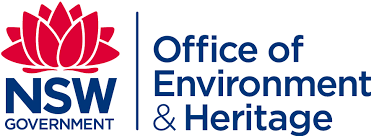Green credentials
As with any large leisure centre, the Willoughby Leisure Centre has a high demand for gas, electricity and water.
The centre is undertaking its own fitness program and aims to lose a few tonnes of CO2 from its carbon footprint. A number of projects have been completed or are underway to reduce the centre's energy and water usage. The works completed so far will offer a carbon saving of over 900 tonnes of CO2 - saving enough coal to fill up the centre's swimming pool.
The centre is undertaking the following sustainability exercises:
Co-Generation System
The centre's most innovative and exciting sustainability program is the cogeneration system. The system incorporates a gas engine and turbine which generates electricity for the centre and heat which is used to heat shower and pool water.
When operating at full capacity, the system is capable of generating up to 175kW of energy per day, supplying more than 50 percent of the centre's total energy.
Weight Loss: The system can generate enough heat to make over 90,000 cups of tea every day and save over 700 tonnes of CO2 per annum.

Supported by the NSW Government’s Climate Change Fund
Efficient Lighting
The lighting in the main pool hall has been retrofitted to reduce the centre's daily energy use.
The old 36 watt (T8) flourescent tubes have been replaced with more efficient 28 watt (T5) tubes.
Not only will this reduce the centre's electricity use but it will also lower the centre's electricity costs.
Weight Loss: The replacement of the 96 fittings offer a CO2 saving of 7.1 tonnes per annum.
Rainwater Harvesting
The centre has five, 22,000 litre rain water tanks that capture and reuse rain water from the centre's roof.
This water is used throughout the centre in the toilets.
Following a thorough filteration process using leading technology, the water is also used to top up the pool.
Weight Loss: The centre has the capacity to store more than 100,000 litres of rainwater.
Solar Hot Water
Solar power is an effective way to supply warm water for the pool and has been integrated into the centre's operations.
More than 320 square meters of solar hot water heating panels have been installed on the centre's roof which use the heat from the sun to heat the pool water.
Weight Loss: The system saves approximately 40 tonnes of CO2 per year.
UV Water Filtration System
The old energy-hungry water treatment equipment, which required extensive capital upgrades to keep it operational, has been upgraded to a new ultra violet system.
Willoughby Council undertook extensive research to find the most effective and efficient system. The U.V. system pumps water into special chambers housing large U.V. lamps. The lamps treat the water to maintain high quality clean water.
Weight Loss: The system's reduced energy consumption saves around 90 tonnes of CO2 per annum. It also uses considerably less water than the old system and lowers the centre energy costs.

Supported by the NSW Government’s Climate Change Fund